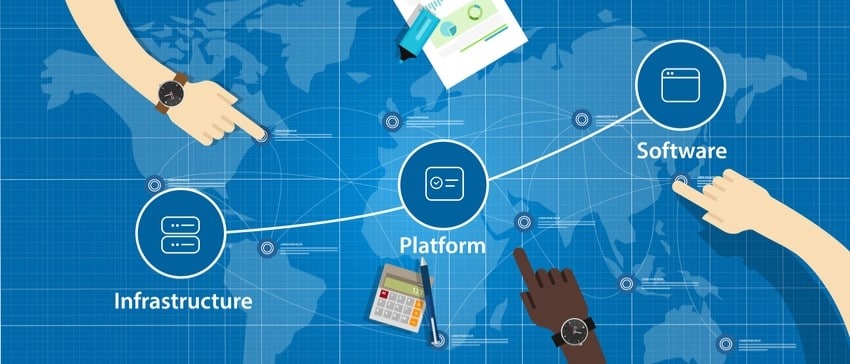In global commerce, the Purchase Order (PO) is a crucial document that facilitates the exchange of goods and services. This document is crucial for a smooth purchasing process. It ensures that businesses receive what they need on time.
In this exploration, we will examine the concept of a purchase order. We will understand the different components of a purchase order and explain the step-by-step process of how it works.
Defining the Purchase Order
A Purchase Order is a legal document. It is used by a buyer to show their intention. The intention is to buy goods or services. The goods or services are from a seller.
It’s a contract that explains the terms of a deal, like how much, when, and where things will be delivered. The PO helps the buyer and seller by making the procurement process clear and organized.
Key Components of a Purchase Order
1. Header Information:
– PO Number: A unique identifier for tracking and referencing.
– Date: The date when the purchase order is issued.
– Buyer Information: Details of the purchasing company, including name, address, and contact information.
– Supplier Information: Details of the selling company, including name, address, and contact information.
2. PO Details:
– Item Description: A detailed description of the goods or services being purchased.
– Quantity: The quantity of each item or service requested.
– Unit Price: The price per unit of the item or service.
– Total Price: The total cost for each line item, calculated as quantity multiplied by unit price.
3. Payment Terms:
– Payment Method: Specifies how the buyer will pay for the goods or services (e.g., credit card, bank transfer).
– Payment Due Date: The deadline by which the payment should be made.
4. Shipping Information:
– Delivery Address: The location where the goods or services should be delivered.
– Delivery Date: The date by which the goods or services should be delivered.
– Shipping Method: The mode of transportation for the goods.
5. Terms and Conditions:
– Warranty/Guarantee: Any warranty or guarantee information provided by the seller.
– Penalties for Late Delivery: Any penalties the seller may incur for delivering goods or services after the specified deadline.
The Purchase Order Process
Understanding the purchase order process involves tracing its journey from creation to fulfillment. Let’s break down the steps involved in the life cycle of a typical purchase order.
1. Need Identification:
Before a purchase order is even on the horizon, there is a need that prompts its creation. Businesses may have different reasons for needing things like more inventory, new equipment, or outside services. Once the need is identified, the purchasing department kicks into action.
2. Creation of the Purchase Order:*
The purchasing department, armed with the specifics of what is required, generates a purchase order. This involves detailing the quantity, quality, and any other relevant information about the goods or services needed. Creating a purchase order requires teamwork between company departments to make sure it’s accurate and complete.
3. Internal Approval Process:
Before the purchase order is sent to the supplier, it typically undergoes an internal approval process. This may involve obtaining approval from various stakeholders, such as department heads, finance teams, or higher management. The goal is to ensure that the purchase aligns with the company’s budget and strategic goals.
4. Transmission to the Supplier:
Once internal approvals are secured, the purchase order is transmitted to the supplier. This can be done through various means, such as email, fax, or through an electronic procurement system. The supplier then reviews the purchase order and acknowledges receipt.
5. Order Confirmation:
After getting the order, the supplier checks if they can fulfill it as requested. If there are any discrepancies or issues, the supplier may communicate with the buyer to resolve them. Once both parties are in agreement, the supplier confirms the order and acknowledges their commitment to fulfilling it.
6. Order Fulfillment:
With the order confirmed, the supplier proceeds to fulfill the requirements outlined in the purchase order. This may involve manufacturing goods, packaging them, and arranging for their delivery. In the case of services, the supplier may begin the agreed-upon work.
7. Shipping and Delivery:
If you buy something physical, the seller sends it to you by the agreed delivery date. When shipping, a notice or slip is made to list what is in the package.
8. Receipt and Inspection:
After getting the goods or services, the buyer checks them to make sure they match the details in the order. This step is crucial as it allows the buyer to identify any discrepancies or defects in the delivered items.
9. Invoice Generation:
Once the buyer confirms the satisfactory receipt of the goods or services, the supplier generates an invoice. The invoice usually has information like the PO number, item descriptions, quantities, prices, and taxes or fees.
10. Payment Processing:
The buyer processes the invoice and initiates the payment according to the agreed-upon terms. This may involve sending a payment through electronic funds transfer, issuing a check, or using another accepted payment method.
11. Record Keeping:
Both the buyer and the seller maintain records of the purchase order, order confirmation, shipping documents, and invoices. These records serve as a crucial reference for future transactions, audits, and financial analysis.
Benefits of Using Purchase Orders
It’s important to emphasize the advantages of the purchase order process for buyers and sellers after understanding its complexities.
1. Clarity and Communication:
– For Buyers: Purchase orders provide a clear and structured way to communicate specific requirements to suppliers, minimizing the likelihood of misunderstandings.
– For Sellers: Suppliers receive detailed instructions, reducing the chances of errors and ensuring they meet the buyer’s expectations.
2. Legal Protection:
– Purchase orders serve as a legally binding contract between the buyer and the seller. If there is a disagreement, the purchase order can be used to settle conflicts about terms, quantities, and prices.
3. Budget Control:
– By requiring internal approvals before creating a purchase order, businesses can exercise better control over their budgets, ensuring that expenditures align with strategic objectives.
4. Efficient Record Keeping:
– The documentation associated with purchase orders, including confirmations, invoices, and shipping records, creates a comprehensive trail for auditing, compliance, and future reference.
5. Supplier Performance Evaluation:
– Purchase orders provide a basis for evaluating supplier performance. Metrics such as delivery times, adherence to specifications, and overall reliability can be assessed based on the details captured in the purchase order and related documents.
6. Streamlined Procurement Process:
– The structured nature of the purchase order process streamlines procurement, reducing the likelihood of errors and delays. This efficiency is especially crucial for businesses dealing with a high volume of transactions.
Common Challenges and How to Overcome Them
While purchase orders offer numerous benefits, like any business process, they come with their set of challenges. Let’s explore some common hurdles associated with purchase orders and strategies to overcome them.
1. Delayed Approvals:
– Challenge: The internal approval process can sometimes be time-consuming, leading to delays in creating and transmitting purchase orders.
– Solution: Implementing an automated approval system can significantly expedite the process. Additionally, establishing clear guidelines for approval can help streamline decision-making.
2. Incomplete or Inaccurate Information:
– Challenge: Purchase orders with incomplete or inaccurate information can lead to misunderstandings and errors in the procurement process.
– Solution: Providing training for staff involved in the creation of purchase orders can enhance accuracy. Using software with validation checks can find and fix errors before sending the purchase order to the supplier.
3. Communication Breakdowns:
– Challenge: Miscommunication between buyers and sellers can result in delivery issues, quality problems, or disputes.
– Solution: Clear communication and shared understanding of purchase order terms can prevent communication breakdowns. Regular updates and feedback sessions can further enhance collaboration.
4. Supplier Reliability:
– Challenge: Dependence on unreliable suppliers can lead to disruptions in the supply chain.
– Solution: Conducting thorough supplier evaluations before establishing relationships is crucial. Monitoring supplier performance over time and having contingency plans for alternative suppliers can help mitigate the impact of supplier unreliability.
5. Manual Processes:
– Challenge:* Relying on manual processes for creating, transmitting, and tracking purchase orders can be time-consuming and error-prone.
– Solution: Investing in procurement automation tools can streamline the entire purchase order process. These tools can automate approvals, generate purchase orders based on predefined templates, and provide real-time tracking and reporting.
Future Trends in Purchase Order Management
As technology continues to advance, the landscape of purchase order management is evolving. Here are some emerging trends that are reshaping the way businesses handle procurement processes.
1. Blockchain Integration:
– Blockchain technology is gaining traction in supply chain management, offering enhanced transparency, security, and traceability. Integrating blockchain into purchase order systems can reduce the risk of fraud and errors.
2. Artificial Intelligence (AI) for Data Analysis:
– AI-powered analytics tools are becoming instrumental in processing and analyzing vast amounts of data associated with procurement. These tools can provide valuable insights, enabling businesses to make more informed decisions and optimize their procurement strategies.
3. Cloud-Based Procurement Solutions:
– Cloud-based procurement platforms are becoming increasingly popular due to their flexibility and scalability. These solutions offer real-time collaboration, accessibility from anywhere, and seamless integration with other business systems.
4. Mobile Procurement Applications:
– The proliferation of mobile devices has led to the development of mobile procurement applications. These apps enable users to create, approve, and track purchase orders on the go, fostering greater agility and responsiveness.
5. Integration with Internet of Things (IoT):
– IoT devices are being leveraged to provide real-time visibility into the status of goods in transit. Integrating IoT data with purchase order systems enhances tracking capabilities and enables proactive management of the supply chain.
Conclusion
The purchase order is important in business because it connects the expectations and commitments of buyers and sellers. Understanding the nuances of this document is crucial for businesses seeking efficiency, transparency, and reliability in their procurement processes. In a time of technology, the purchase order is more than just paper. It changes and adapts to keep business running smoothly.












